Volkswagen T1 Transporter– 1954 assembly in VW factory press photo
A superb and rare photo of the 1954 Volkswagen T1 Transporter , in Germany also known as the Volkswagen Bus . According the spec. sheet that came with the negative, the photo was taken in the German Volkswagen factory in Wolfsburg on April 12, 1954 . The image shows nice detail of the production process of the magnificent in the factory.
The Volkswagen Transporter , also officially known as the Volkswagen Type 2 (the VW Beetle or Käfer being the Type 1) and informally known as the Volkswagen Bus ) was the second automotive line introduced by German automaker Volkswagen. It was a panel van introduced in 1950, initially based on Volkswagen's first model, the Type 1, the economy car also known as the "Beetle". The Type 2 is the forerunner of modern cargo and passenger vans. The Type 2 spawned a number of imitators, both in the United States and Europe, including the Ford Econoline, Dodge A100, and the Corvair 95 Corvan, the last even adopting the Type 2's rear-engine configuration. As of January 2010, updated versions of this line are produced for international markets, both as a passenger and cargo van, and as a pickup truck. It is also unofficially known as a "microbus", "minibus", "kombi" or "hippie van," the latter due to its popularity with the 1960s/70s counterculture movement. The idea for the Type 2 is credited to Dutch Volkswagen importer Ben Pon. (It has similarities in concept to the 1920s Rumpler Tropfenwagen and 1930s Dymaxion car by Buckminster Fuller, neither of which reached production.) Pon visited Wolfsburg in 1946, intending to purchase Type 1s for import to Holland, where he saw an improvised parts-mover and realized something better was possible, using the stock Type 1 pan. He returned to the factory close the deal, and in a doodle dated 23 April 1947 drew the first sketches of the van. He posited a payload of 690 kg (1,500 lb), with the driver at the very front. Production would have to wait, however, as the factory was having difficulties even maintaining Type 1 output. When this abruptly changed, it took a short three months to produce a prototype, which was known internally as the Type 29. It was soon realized the stock Type 1 pan was too weak, and a ladder chassis with unit body construction was produced, instead; by coincidence, the wheelbase was the same as the Type 1's. Engineers reused the reduction gear originated on the Type 81, enabling the 1.5 ton van to use a 25 hp (19 kW) flat four. Although the aerodynamics of the first prototypes were poor (the original drag coefficient was 0.75), optimisation took place at the wind tunnel of the Technical University of Braunschweig. It was learned simple changes, such as adding a "vee" to the windshield and roofline, made a big difference. The production Type 2 was aerodynamically superior to the Type 1, with a Cd of 0.44, compared to 0.48. Volkswagen's new chief executive officer Heinz Nordhoff (appointed 1 January 1948) approved the van for production 19 May 1949, and the first production model rolled off the assembly line to debut 12 November, now designated Type 2. Only two models were offered, the Kombi (with middle and rear seats that were easily removable by one person, and two side windows) and the Commercial; the Microbus (world's first minivan, officially the Type 22) was added in May 1950, joined by the Deluxe Microbus in June 1951. In all, 9,541 Type 2s were produced in the first year. An ambulance model was added in December 1951, which repositioned the fuel tank in front of the transaxle and the spare tire behind the front seat, while adding a "tailgate"-style rear door. These features became standard on the Type 2 from 1955 to 1967. 11,805 Type 2s were built in the 1951 model year. These were joined by a single-cab pickup in August 1952, and it changed the least of the Type 2s until all were heavily modified in 1968. Unlike other rear engine Volkswagens, which evolved constantly over time but never saw the introduction of all-new models, the Transporter not only evolved, but was completely revised periodically with variations referred to as versions "T1" to "T5," although only generations T1 to T3 (or T25 as it is called in Ireland and Great Britain) can be seen as directly related to the Beetle. The Type 2, along with the 1947 Citroën H Van, among the first 'forward control' vans in which the driver was placed above the front roadwheels. It started a trend in Europe, where the 1952 GM Bedford CA, 1960 BMC Morris J4, and 1960 Commer FC copied the concept. In the United States, the Corvair-based Chevrolet Corvan cargo van and Greenbrier passenger van went so far as to copy the Type 2's rear-engine layout, using the Corvair's horizontally-opposed, air-cooled engine for power. Except for the Greenbrier and various 1950s-70s Fiat minivans, the Type 2 remained unique in being rear-engined. This was a disadvantage for the early "barndoor" Panel Vans, which couldn't easily be loaded from the rear due to the engine cover intruding on interior space, but generally advantageous in traction and interior noise. The Type 2 was available as a Panel van, a delivery van without side windows or rear seats; Nippen Tucket, available in six colours, with or without doors; Walk-Through Panel Van, a delivery van without side windows or rear seats and cargo doors on both sides; High Roof Panel Van (German: Hochdach), a delivery van with raised roof; Kombi, from German: Kombinationskraftwagen (combination motor vehicle), with side windows and removable rear seats, both a passenger and a cargo vehicle combined; Bus, also called a Volkswagen Caravelle, a van with more comfortable interior reminiscent of passenger cars since the third generation; Samba-Bus, a van with skylight windows and cloth sunroof, first generation only, also known as a Deluxe Microbus. They were marketed for touring the Alps; Flatbed pickup truck, or Single Cab, also available with wider load bed; Crew cab pick-up, a flatbed truck with extended cab and two rows of seats, also called a Doka, from German: Doppelkabine; Westfalia camping van, "Westy", with Westfalia roof and interior; Adventurewagen camping van, with high roof and camping units from Adventurewagen; Semi-camping van that can also still be used as a passenger car and transporter, sacrificing some camping comforts. "Multivan" or "Weekender", available from the third generation on. Apart from these factory variants, there were a multitude of third-party conversions available, some of which were offered through Volkswagen dealers. They included, but were not limited to, refrigerated vans, hearses, ambulances, police vans, fire engines and ladder trucks, and camping van conversions by companies other than Westfalia.
The first generation of the Volkswagen Type 2 , also named the Volkswagen T1 , with the split windshield , informally called the Microbus , Splitscreen , or Splittie among modern fans, was produced from March 8, 1950 through the end of the 1967 model year. From 1950-1956, the T1 was built in Wolfsburg; from 1956, it was built at the completely new Transporter factory in Hanover. Like the Beetle, the first Transporters used the 1100 Volkswagen air cooled engine, an 1,131 cc (69.0 cu in), DIN-rated 18 kW (24 PS; 24 bhp), air-cooled flat-four cylinder 'boxer' engine mounted in the rear. This was upgraded to the 1200 — an 1,192 cc (72.7 cu in) 22 kW (30 PS; 30 bhp) in 1953. A higher compression ratio became standard in 1955; while an unusual early version of the 30 kW (41 PS; 40 bhp) engine debuted exclusively on the Type 2 in 1959. This engine proved to be so uncharacteristically troublesome that Volkswagen recalled all 1959 Transporters and replaced the engines with an updated version of the 30 kW engine. Any 1959 models that retain that early engine today are true survivors. Since the engine was totally discontinued at the outset, no parts were ever made available. The early versions of the T1 until 1955 were often called the T1a or "Barndoor", owing to the enormous rear engine cover, while the later versions with a slightly modified body (the roofline above the windshield is extended), smaller engine bay, and 15" roadwheels instead of the original 16" ones were called the T1b. From the 1964 model year, when the rear door was made wider (same as on the T2), the vehicle was referred to as the T1c. 1964 also saw the introduction of an optional sliding door for the passenger/cargo area instead of the outwardly hinged doors typical of cargo vans. This change arguably makes the 1964 Volkswagen the first true minivan, although the term wouldn't be coined for another two decades. In 1962, a heavy-duty Transporter was introduced as a factory option. It featured a cargo capacity of 1,000 kg (2,205 lb) instead of the previous 750 kg (1,653 lb), smaller but wider 14" roadwheels, and a 1.5 Le, 31 kW (42 PS; 42 bhp) DIN engine. This was so successful that only a year later, the 750 kg, 1.2 L Transporter was discontinued. The 1963 model year introduced the 1500 engine - 1,493 cc (91.1 cu in) as standard equipment to the US market at 38 kW (52 PS; 51 bhp) DIN with an 83 mm (3.27 in) bore, 69 mm (2.72 in) stroke, and 7.8:1 compression ratio. When the Beetle received the 1.5 L engine for the 1967 model year, its power was increased to 40 kW (54 PS; 54 bhp) DIN. German production stopped after the 1967 model year; however, the T1 still was made in Brazil until 1975, when it was modified with a 1968-79 T2-style front end, and big 1972-vintage taillights into the so-called "T1.5" and produced until 1996. The Brazilian T1s were not identical to the last German models (the T1.5 was locally produced in Brazil using the 1950s and 1960s-era stamping dies to cut down on retooling, alongside the Beetle/Fusca, where the pre-1965 body style was retained), though they sported some characteristic features of the T1a, such as the cargo doors and five-stud 205 mm (8.1 in) PCD) rims. Among American enthusiasts, it is common to refer to the different models by the number of their windows. The basic Kombi or Bus is the 11-window (a.k.a. three-window bus because of three side windows) with a split windshield, two front cabin door windows, six rear side windows, and one rear window. The deluxe model featured eight rear side windows and two rear corner windows, making it the 15-window (not available in Europe). Meanwhile, the sunroof deluxe with its additional eight small skylight windows is, accordingly, the 23-window. From the 1964 model year, with its wider rear door, the rear corner windows were discontinued, making the latter two the 13-window and 21-window respectively. The 23- and later 21-window variants are usually described as Sambas. U.S. sales of Volkswagen vans in pickup and commercial configurations were curtailed by the Chicken tax. Certain models of the Volkswagen Type 2 played a role in an historic episode during the early 1960s, known as the Chicken War. France and West Germany had placed tariffs on imports of U.S. chicken. Diplomacy failed, and in January 1964, two months after taking office, President Johnson imposed a 25% tax (almost 10 times the average U.S. tariff) on potato starch, dextrin, brandy, and light trucks. Officially, the tax targeted items imported from Europe as approximating the value of lost American chicken sales to Europe.In retrospect, audio tapes from the Johnson White House, revealed a quid pro quo unrelated to chicken. In January 1964, President Johnson attempted to convince United Auto Workers' president Walter Reuther not to initiate a strike just prior to the 1964 election, and to support the president's civil rights platform. Reuther, in turn, wanted Johnson to respond to Volkswagen's increased shipments to the United States. The Chicken Tax directly curtailed importation of German-built Type 2s in configurations that qualified them as light trucks — that is, commercial vans (panel vans) and pickups. In 1964, U.S. imports of automobile trucks from West Germany declined to a value of $5.7 million — about one-third the value imported in the previous year. After 1971, Volkswagen cargo vans and pickup trucks, the intended targets, "practically disappeared from the U.S. market". While post-1971 Type 2 commercial vans and single-cab and double-cab pickups can be found in the United States today, they are exceedingly rare. As of 2010, the Chicken tax remains in effect.
This is a very nice and very rare non period photo that reflects a wonderful era of Volkswagen ‘s automotive history in a wonderful way. This is your rare chance to own this photo, therefore it is printed in a nice large format of ca. 8" x 12" (ca. 20 x 30 cm). It makes it perfectly suitable for framing.
Shipping costs will only be $ 7.00 regardless of how many photos you buy. For 5 or more photos, shipping is free!
(Note: A. Herl, Inc. does not appear on photo, for ebay purposes only)
No copyright expressed or implied. Sold as collectable item only. We are clearing out our archives that we have gathered from various sources.
All items always sent well protected in PVC clear files and board backed envelopes.
We have photographs that came from professional collections and/or were bought from the original photographer or press studio! They are all of professional and excellent quality.
After many decades of professionally collecting photographs and posters we are clearing out our archives. They make the perfect gift and are perfectly suited for framing. They will look gorgeous unframed and will be a true asset nicely framed with a border. They are a gorgeous and great asset in every home, workshop, workplace, restaurant, bar or club!
First come - first served. And you can always contact us for your requests. Please ask any questions before the auction ends.
- Condition: New
PicClick Insights - Volkswagen T1 Transporter– 1954 assembly in VW factory press photo PicClick Exclusive
- Popularity - 1 watcher, 0.0 new watchers per day, 451 days for sale on eBay. Normal amount watching. 0 sold, 1 available.
- Best Price -
- Seller - 5,566+ items sold. 1% negative feedback. Great seller with very good positive feedback and over 50 ratings.
People Also Loved PicClick Exclusive
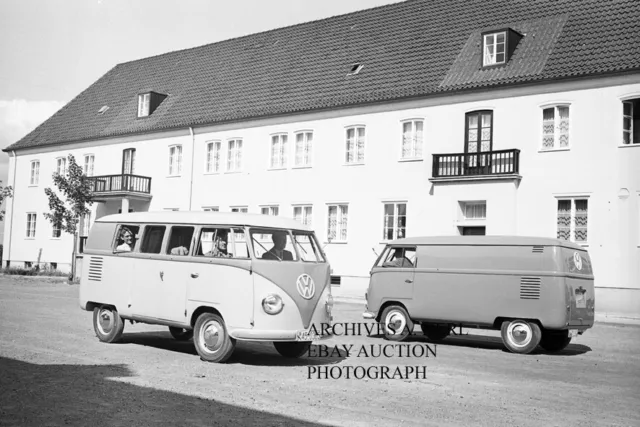
Volkswagen T1 Transporter van VW factory photo press photograph
£9.59 Buy It Now 23d 23h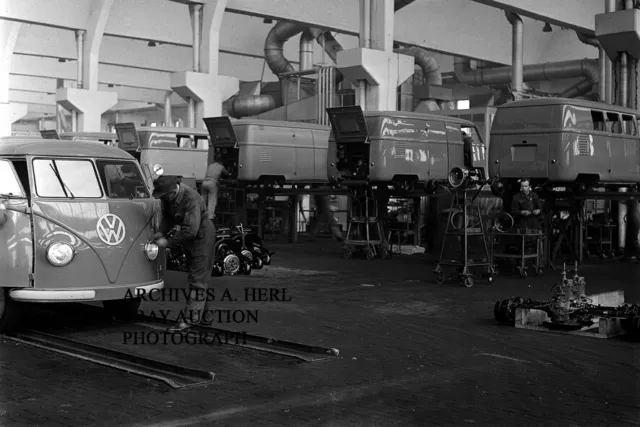
Volkswagen T1 Transporter garage in VW factory photo press photograph
£9.59 Buy It Now 11d 1h
Volkswagen T1 Transporter VW factory – photo photograph
£9.40 Buy It Now 18d 0h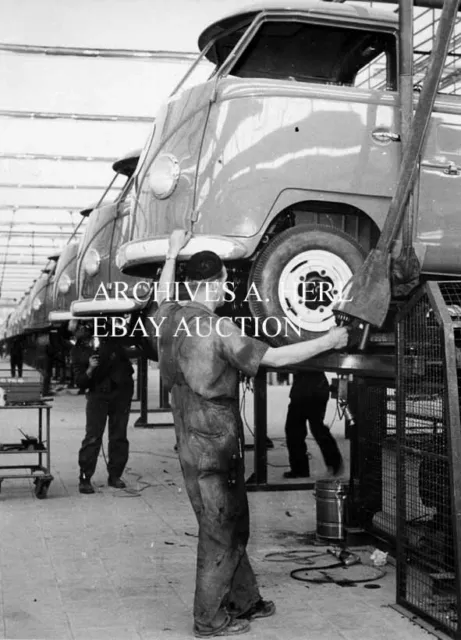
Volkswagen T1 Transporter 1950s Hannover assembly VW factory press photo new
£9.59 Buy It Now 29d 0h
Volkswagen T1 Transporter assembly in VW factory – photo - photograph
£9.40 Buy It Now 24d 0h
Operating instructions / manual VW bus / van T1 stand 02/1963
£213.30 Buy It Now or Best Offer 8 watchers
8 watchersVW Transporter T1 1954-1964 Maintenance Lubrication Maintenance Specifications
£15.08 Buy It Now 1 watcher
1 watcherOperating instructions VW bus / van T1 stand 11/1961
£170.62 Buy It Now or Best Offer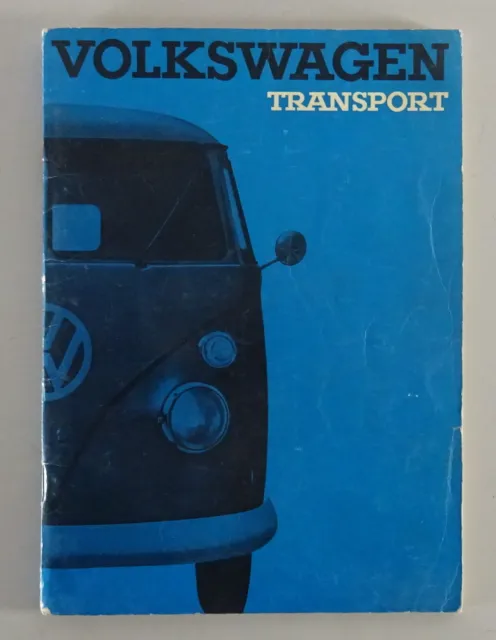 2 watchers
2 watchersOperating instructions / manual VW bus / van T1 stand 10/1964 Swedish
£110.87 Buy It Now or Best Offer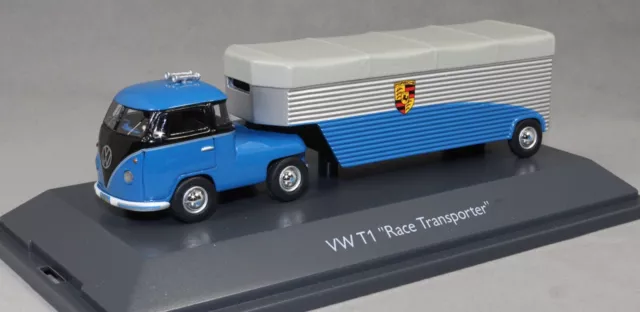 3 watchers
3 watchersSchuco Pro.R Volkswagen VW T1 Porsche Race Transporter 452001500 1/64 NEW
£54.99 Buy It Now
